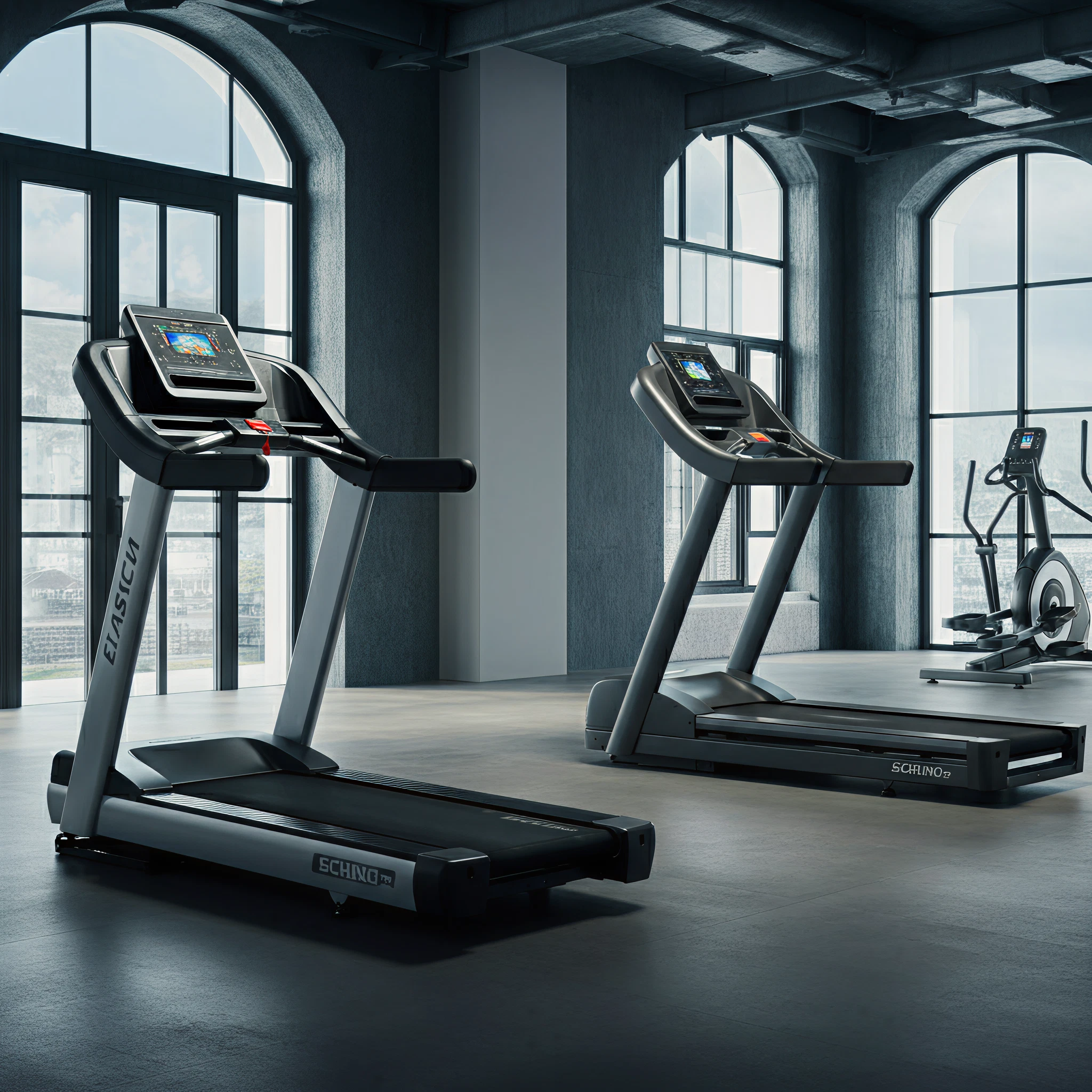Whether you’re a fitness enthusiast, setting up a home gym, or just beginning your fitness journey, choosing the right treadmill is essential. With various treadmill types available, each catering to different needs and budgets, it’s important to understand the differences to make an informed decision.
This guide dives deep into treadmill types, helping you find the best treadmill for your home exercise routine while aligning with your fitness goals.
What Are the Different Types of Treadmills?
Here’s a breakdown of the most popular types of treadmills:
1. Manual Treadmills
Manual treadmills operate without electricity. Instead, the belt moves as you walk or run, relying on your own effort.
Best For:
Beginner fitness enthusiasts looking for basic cardio exercises or low-budget options.
Pros:
- Affordable
- Portable and lightweight
- No electricity required
Cons:
- Limited features
- Requires more effort to get the belt moving
- Less suitable for running
2. Motorized Treadmills
Motorized treadmills are powered by a motor, offering adjustable speeds and incline levels to match different fitness needs.
Best For:
Anyone who wants a variety of features and the ability to transition between walking, jogging, and running seamlessly.
Pros:
- Smooth and continuous belt movement
- Advanced features like pre-set workout programs
- Perfect for endurance training
Cons:
- More expensive
- Requires electricity
- Heavier and less portable
3. Folding Treadmills
Folding treadmills are designed to save space by folding up when not in use.
Best For:
Home gym owners with limited floor space.
Pros:
- Space-saving design
- Easier storage
- Many models offer the same features as traditional motorized treadmills
Cons:
- May be less durable
- Slightly limited running deck size
4. Incline Treadmills
Incline treadmills allow users to adjust the incline level significantly, simulating uphill walking or running.
Best For:
Those looking to challenge themselves with high-calorie-burn workouts or improve cardiovascular endurance.
Pros:
- Enhances calorie burn and adds resistance to workouts
- Great for muscle tone and strength building
- Advanced incline levels simulate outdoor trails
Cons:
- Typically more expensive
- Larger footprint
5. Commercial Treadmills
Commercial treadmills are heavy-duty machines built for gyms and studios, capable of handling continuous use.
Best For:
Fitness facilities or hardcore runners looking for top-tier durability and advanced features.
Pros:
- Robust and durable
- Multiple advanced features and settings
Cons:
- Bulky and expensive
- Not space-efficient for home gyms
6. Hybrid Treadmills
Hybrid treadmills combine treadmill functionality with other fitness equipment, such as an elliptical or stepper.
Best For:
Fitness enthusiasts looking for versatile machines to target multiple muscle groups.
Pros:
- Multi-functional workouts
- Great for cross-training
Cons:
- Expensive
- Larger in size
7. Under-Desk Treadmills
These compact treadmills are designed to fit under standing desks, allowing you to stay active while working.
Best For:
Remote workers or desk-bound individuals seeking to integrate more movement into their day.
Pros:
- Compact and space-efficient
- Low-speed options for walking while working
Cons:
- Not suitable for running
- Limited features
How to Choose the Best Treadmill for Your Needs
When evaluating the best treadmill for your home exercise routine, consider these factors:
1. Purpose:
Are you walking, jogging, or training for a marathon? Pick a treadmill that fits your workout goals.
2. Space:
For small spaces, folding or under-desk treadmills may be ideal. Larger areas can accommodate motorized or incline machines.
3. Budget:
Manual treadmills are budget-friendly, while motorized and incline options may require a higher investment.
4. Durability:
If you’re a frequent runner, prioritize durability and a robust motor. Commercial-grade treadmills can handle more wear and tear.
5. Features:
Explore features like pre-set workout programs, heart rate monitors, and incline settings to enhance your exercise experience.
Bonus Tip: Always check the warranty and customer reviews before purchasing to ensure the treadmill matches your long-term expectations.
Treadmill Comparison
| Type | Best For | Key Features | Considerations |
|---|---|---|---|
| Manual Treadmills | Beginners, low budgets | Affordable, no electricity needed | Requires effort to move the belt |
| Motorized Treadmills | Runners, versatile users | Adjustable speed, smooth operation | Needs electricity, higher cost |
| Folding Treadmills | Small spaces, home gyms | Foldable design, space-saving | May lack running deck size |
| Incline Treadmills | Intense workouts, endurance | High incline options, calorie burning | More expensive, bulky |
| Commercial Treadmills | Gyms, long-term heavy use | Heavy-duty construction | Expensive, large footprint |
| Hybrid Treadmills | Cross-training, versatility | Combines multiple functionalities | High price point, large size |
| Under-Desk Treadmills | Work-from-home fitness enthusiasts | Compact, low-speed for walking | Limited for running, fewer features |
Why Choose a Treadmill for Home Exercise?
- Convenience: Workout anytime, regardless of the weather.
- Customizability: Adjust speed and incline to suit your fitness level.
- Consistency: Stay committed to your routine with easy access to your fitness equipment.
No matter your fitness level, there’s a treadmill type to suit your goals and lifestyle.
Begin Your Treadmill Journey Today
With so many treadmill types available, there’s no excuse not to kickstart your fitness goals! Whether you’re looking to invest in a sturdy treadmill for marathon training or a space-saving option for casual workouts, understanding your options is key.
For fitness enthusiasts and beginners alike, treadmills can be the perfect way to reach your health goals from the comfort of your home.
Looking for more fitness tips or treadmill recommendations? Stay tuned to our blog!
(Note to generate images for the article, please use your preferred image creation tool to include clear, engaging visuals of the different treadmill types for added value and aesthetics.)








